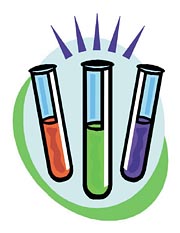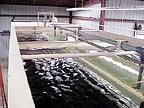

The problem is even treated water still has some levels of impurities, and there is plenty of debate among many public interest groups what the “safe” amount of these levels should be.
To a certain extent, the EPA itself is the source of this confusion. The EPA establishes two different levels for the contaminants it polices.
As a first step in the process, the EPA sets standards for safe levels of chemicals in drinking water that are based solely on health concerns.
These Maximum Contaminant Level Goals, or MCLGs, do not consider how much it would cost a public utility to meet these marks. As the term “goals” implies, these levels are not enforceable under the law, but represent targets to strive for.
Afterward, the EPA then sets Maximum Contaminant Levels, or MCLs, which are enforceable standards. MCLs are set as close to the MCLGs as possible, but they do take into account the practicality of public water systems to detect and remove contaminants using suitable filtration and treatment technologies.
In other words, MCLGs represent the ideal situation; the MCLs represent the real world.
For many contaminants, particularly those on the public’s mind, the MCLG is zero while the MCL is somewhat north of that ideal amount. What’s more, the EPA puts these two numbers right out in the open, side by side in its published regulations, for all the country to see.
“The EPA can’t regulate at zero because many water treatment systems, particularly those serving smaller cities, couldn’t afford to treat water to that level of purity,” says Joe Harrison, technical director of the Water Quality Association, a water treatment trade group based in Lisle, Ill. “After all, what is ‘zero?’ Even one molecule of a contaminant would mean it wouldn’t pass such a standard.”
So, does the perfect glass of water exist? Yes, and closing the gap between the ideal of the MCLGs and the reality of the MCLs adds up to a tremendous opportunity for marketing residential water treatment equipment.
“Consumers do have an uneasiness about many contaminants, especially when they find that that can buy bottled water that has zero levels of many common contaminants — or at least as close to zero as we can measure,” Harrison adds.
THMs: You can see how this discrepancy between MCLs and MCLGs plays out with one of the latest causes of concerns — trihalomethanes or THMs. We may be oversimplifying a bit, but THMs are the result of the disinfecting process itself. Yes, you read that right — even the most common treatment to treat water causes it own contamination by the time it reaches your faucet.
Disinfecting water with chlorine, for example, has been a mainstay since the 1880s, primarily because it’s cheap and it works. Chlorine is a powerful chemical that kills bacteria and many troublesome parasites in water. By the 1920s, chlorination (and other filtration procedures) virtually eliminated epidemics of major waterborne diseases such as typhoid and cholera in the United States. According to a 1995 EPA survey, almost two-thirds of public water treatment facilities use chlorine as a disinfectant.
Now that’s progress. So why are people objecting to chlorination now? Chlorine is, in fact, also toxic to humans. When added to water, chlorine interacts with other inorganic and organic chemicals present in the water to produce even more toxic by-products — the contaminant du jour THMs. (THMs actually refers to a family of disinfecting by-products. Chlorine produces chloroform, the most common contaminant of the clan.)
The EPA’s MCL for total THMs is 80 parts per billion; its MCLG is zero.
“We can’t discourage the use of chlorine since there is much more benefit to its use than risk,” Harrison says.
Bottled water is one option, but an expensive one. The most practical way of treating treated water is with a family of water treatment equipment referred to as “point-of-use” or POU equipment. Reverse osmosis and carbon filters would be just two examples of POU products. By and large, most of the equipment on the market today (or perhaps, a combination of different types of POU equipment to form a sort of “treatment train”) can effectively make drinking water more like the MCLG ideal.
We hate to say that it would render the water to a zero level of THMs, but water treatment equipment can virtually eliminate THMs. Additionally, while the performance of different brands of equipment may vary, Harrison encourages using an RO system rated for THMs since ridding water of THMs also will eradicate other common contaminants.
Two other contaminants, one relatively new and the other an issue for decades, also are common concerns that can be effectively treated at the point of use:
Arsenic: The “right” amount of arsenic in treated water is another matter of fierce debate. Until a few years ago, acceptable levels of arsenic were set at 50 parts per billion and had been the standard since the 1950s, decades before the EPA was even established. Then, just before President Bill Clinton left office, the EPA announced it would lower the standard to 10 parts per billion.
The issue become a political football after the Bush administration said it wouldn’t go along with that decision, and then later agreed to making it 5 parts per billion by January 2006.
Meanwhile, the MCLG for arsenic is — you guessed it — zero. (We should add that the MCLG is still a proposal as is the MCL.)
Arsenic is just about as dangerous as it sounds. Exposure to arsenic can cause cancer and diabetes, as well as various circulatory maladies. It’s also more common than you think since it’s a naturally occurring substance of the Earth’s crust.
Setting more stringent regulations for arsenic will seriously tax the abilities of smaller water treatment systems. And we do mean this literally since most everyone is for safe drinking water, but they don’t want to see higher taxes or water bills to be a result. Eliminating arsenic at the tap, particularly for smaller systems, may prove to be the most affordable way to meeting this new standard.
“The arsenic issue has turned out to be an ‘icebreaker’ to treat this contaminant as well as others at the point of use,” Harrison explains.
Lead: Unlike most other contaminants, the EPA does not set an MCL for lead since the level of such contamination can’t be controlled by the public water system. Lead wouldn’t normally be present as the water leaves the treatment plant. Rather, most instances of lead contamination in drinking water are the result of corrosion of lead pipe. All water is corrosive to metal plumbing systems to some degree.
There is, however, an “action level” of 15 parts per billion that would trigger additional treatment procedures. Meanwhile, the MCLG is — how did you guess? — zero.
While there may be room to debate some of the health hazards of certain contaminants, few doubt the effects of lead, particularly on children as well as unborn children. Such harmful effects include premature births, smaller babies, decreased mental ability in the infant, learning difficulties and reduced growth in young children.
The bottom line, however, is if lead is present in tap water, many treatment products can effectively remedy the situation. The WQA recommends a choice of six methods.
Ultimately, water treatment comes down to a delicate balancing act between public health and public money. Public water systems do provide safe water, and the majority of contaminants that remain after treatment are present in minute amounts. They may contribute to health problems only after many years of exposure, making identification of the cause difficult, if not impossible.
Trusting the system when it comes to drinking water is a safe bet. But systems still fail. And more importantly, POU equipment may prove to be the most affordable method of ensuring safe drinking water.
Report Abusive Comment